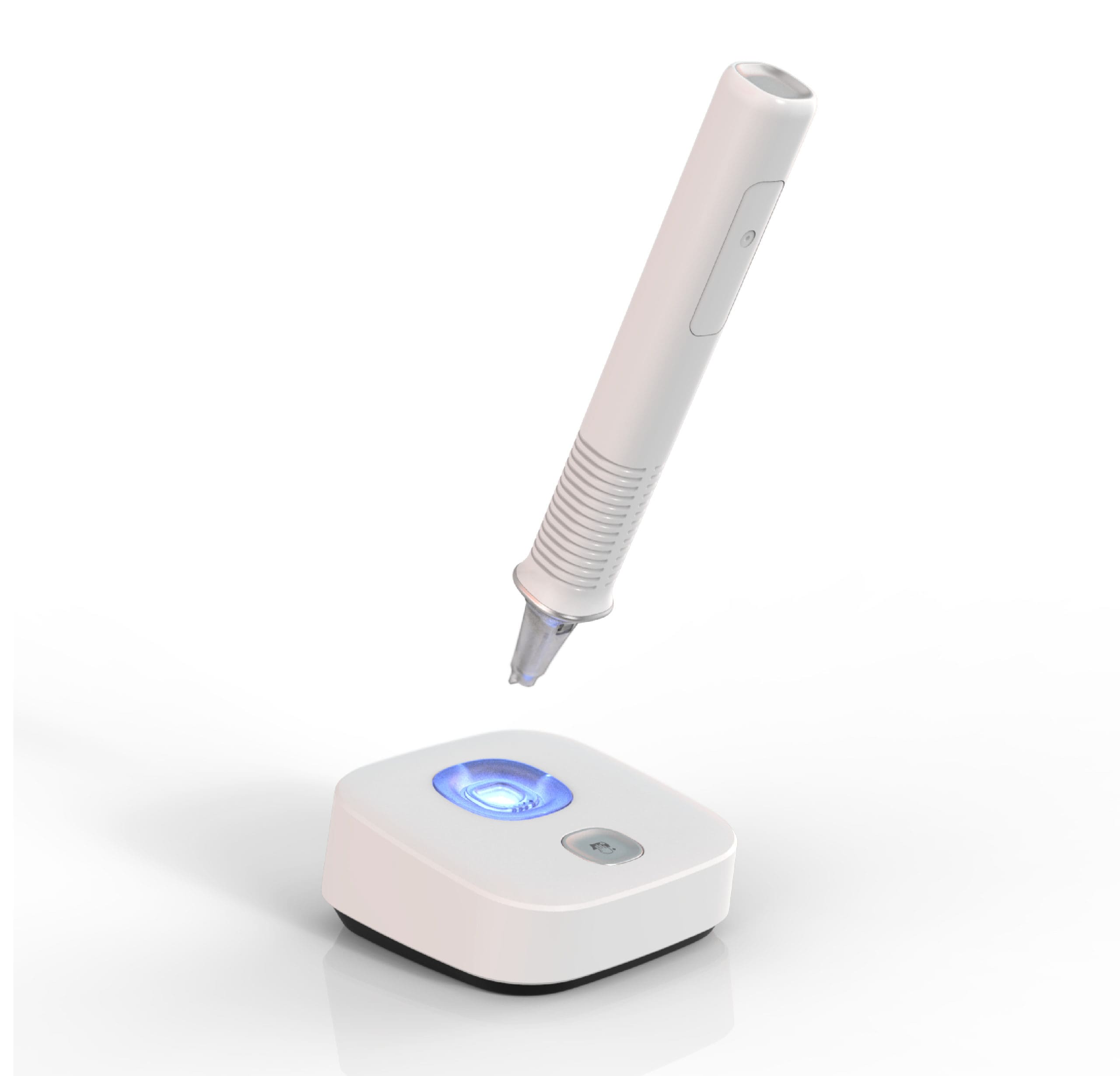PERIOMETER
Diagnosing damage
that otherwise can't
be detected.
Type:
Industrial Design
Human Factors
Industry:
Medical
The Challenge
Productizing Percussion Diagnostics technology and Machine Learning into an ergonomic and durable device that would diagnose and assess dental damage without using radiation-based x ray systems.
The Impact
RKS and Perimetrics worked over several years to collaboratively to bring Perimetrics’ technology into a human-centered device that could seamlessly integrate into existing dental workflows.
The Outcome
An FDA-approved device that gives dentists and hygienists unique insights into the health of a patient’s teeth.

Psycho Aesthetics™: “It’s not how you feel about the design or experience, it’s how the design makes you feel”
– Ravi Sawhney
Our Human-Centered Methodology
RKS Utilizes our Human-Centered Methodology, Psycho Aesthetics, to identify the key opportunities in the market and drive innovation across sectors and categories. Ravi’s book, Predictable Magic, which discusses how our P/A Methodology can be leveraged as a business tool, is published through Wharton School of Business. RKS also has a Harvard Excercise and Harvard Case Study, which can discuss the methodology and provide people with an understanding of how to apply Psycho-Aesthetics to their product development planning.
In addition to these publications, RKS teaches Psycho-Aesthetics to USC’s MBA program and runs workshops to teach our methodology at UCLA, CSUN, SCAD, CSULB, along with many companies looking to integrate design thinking into their organization. Psycho Aesthetics is also part of the core curriculum at SCAD, the largest design university in the US.

P/A Map™ by RKS Design
P/A maps are a scalable design-strategy framework.They are a center point to Psycho-Aesthetics,providing a consistent lens to see the world through. Additionally, we find that usingP/A maps trigger recall at a higher level than occurotherwise. Viewing visuals trigger recall of processand insights that allow communication with higherlevels of depth, clarity, and conviction. The mapsbecome a new shared language between stakeholdersand ourselves.It is used to map personas, brands, and offeringsagainst the consumer’s Hierarchy of Needs,Desires, and Aspirations on one hand and levels ofinteractivity on the other. Once these entities aremapped, opportunity zones (White Space / BlueOcean) can be identified and design directions can bedefined and communicated.
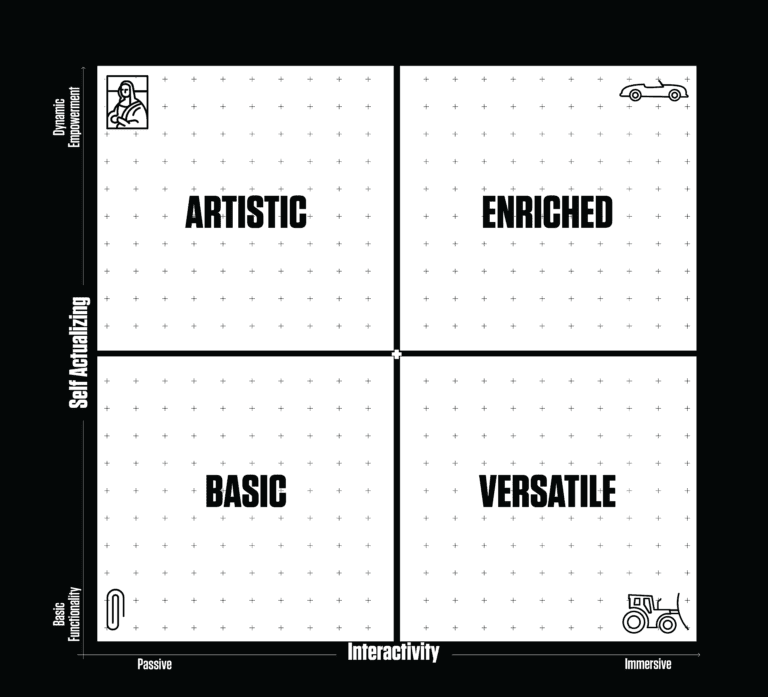
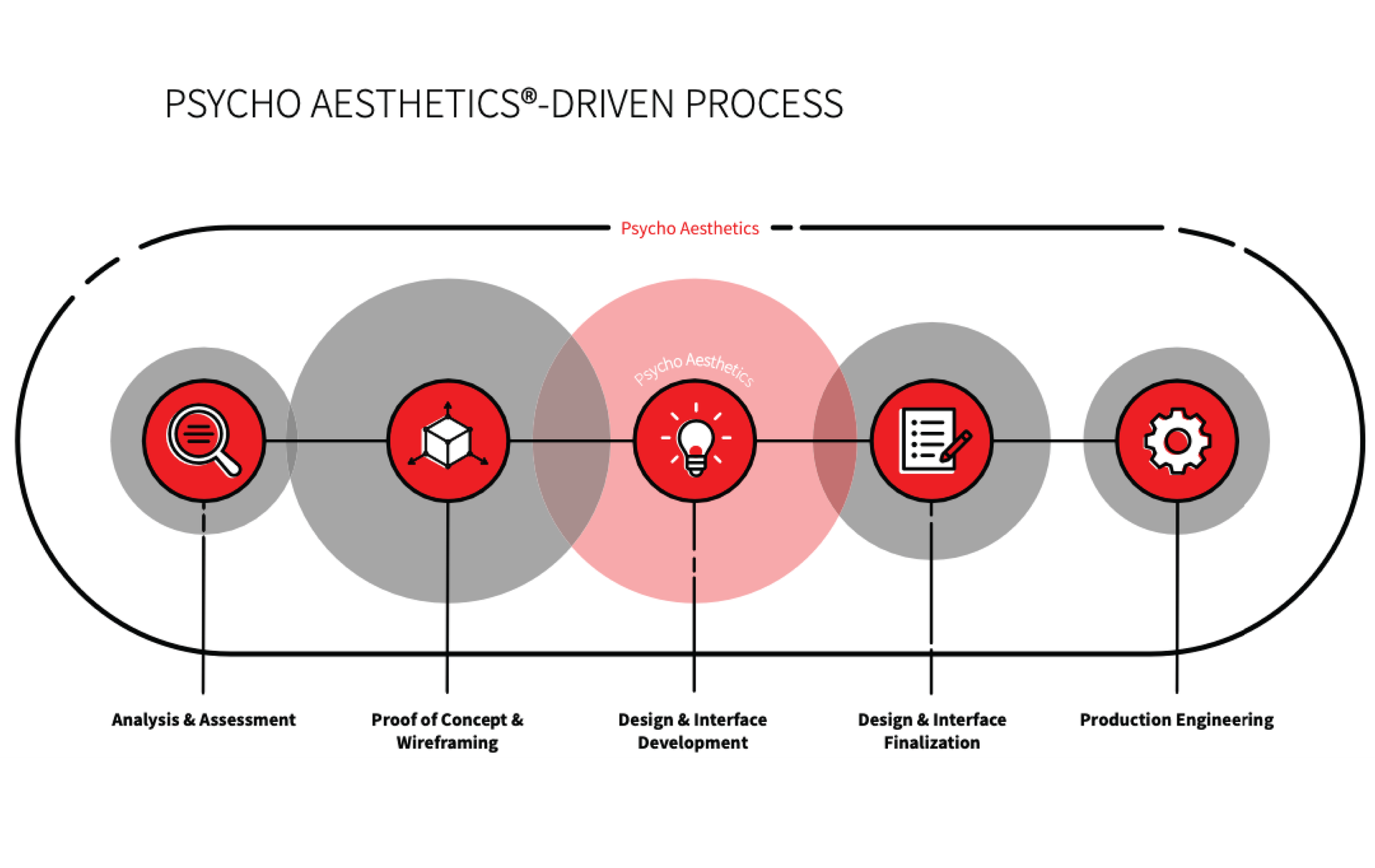
Research
The client had an existing test device that was based on a novel percussive technology. Our team spent time with the client team to understand the opportunity, the key aspects of this novel technology, and the intended use cases, and the dental ecosystem.
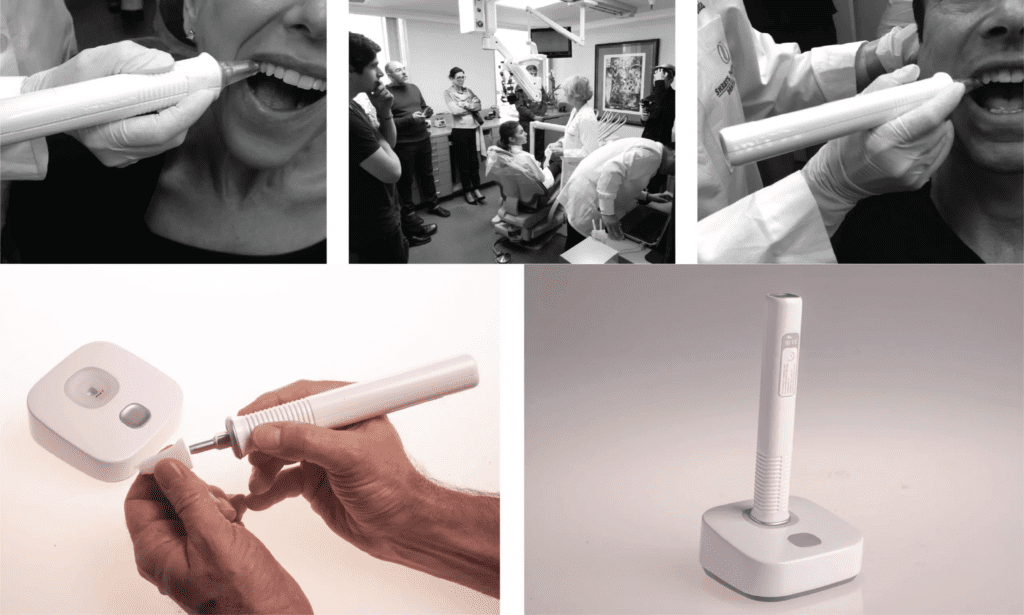

Auxiliary Research & Engineering Analaysis
Auxiliary research helped RKS understand the foundational technology: Percussion Diagnostics runs
a vibration on a tooth, and detects the wave pattern relative to the substrate. AI can translate the vibrations in a tooth into a visual representation or a pattern. A tooth that has a different composition or has a problem gives a deviated pattern from the rest of the teeth.
Because the percussive technology had not been proved out, only tested in very early forms, our engineering team would have to engineer the technology for human use. This preliminary engineering analysis provided the framework for the productized development of the final technology.
Internal and External Reviews & Key Results
We needed to understand the dental ecosystem, the stakeholders, and the existing technologies and 2 workflows used by caregivers. Our interviews helped us develop the required knowledge to dive deep into the project as a development firm, proving a new technology in a clinical setting.
Our initial assessment allowed us to understand the technology and user needs sufficiently to move onto a proof of concept to test the feasibly of the technology for the needed use cases.
Concepting
Because the technology was new and our client only had a rudimentary working example, we had to create a proof of concept and UI wireframes to understand how we could apply this technology to a device translated by a computer. As part of this process, we needed to source and evaluate components.
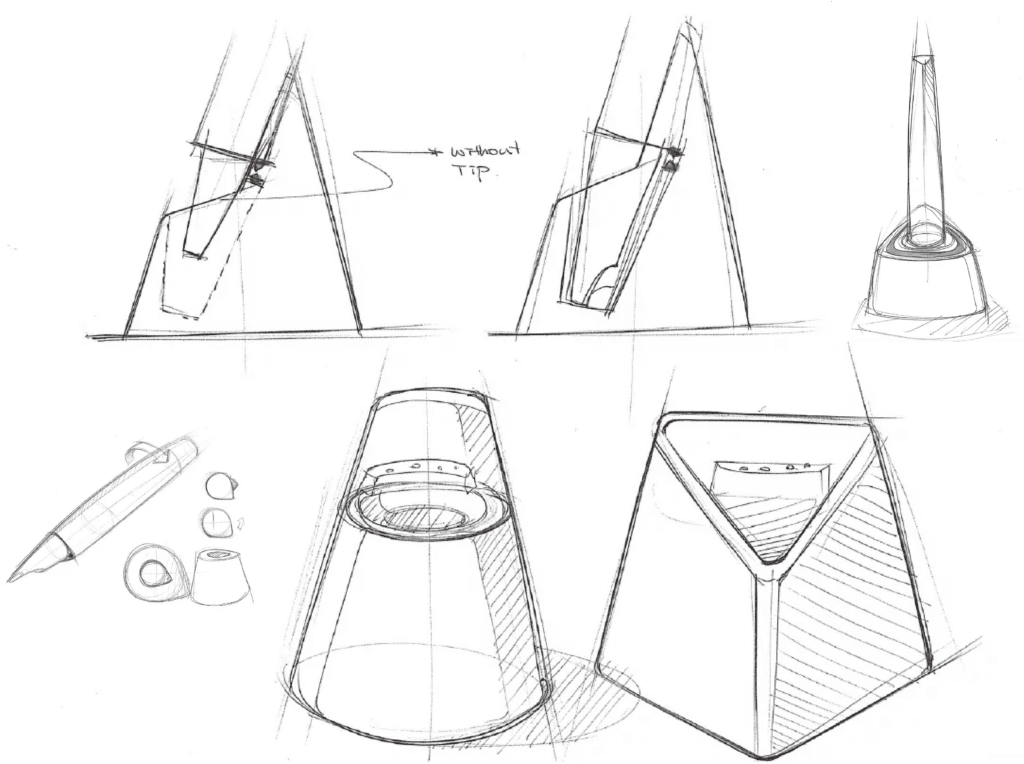
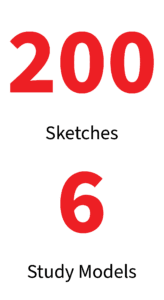
Evaluating COGS & 3D Configuration Development
Our client tasked us with developing a product that was cost-effective, and bio-compatible, and cost-effective to have at each dental station. We sent out RFPs to trusted partners, and evaluated new partners in order to come up with a COGS proposal.
Our team using basic tools such as white-boarding and sketching with the latest in 3D modeling to create proof of concepts. Our team had to understand how different materials, rods, and solenoids, and fore-sensors could be included in order to get accurate readings from a device.
Create Wireframes & Iterate Proof of Concept
We needed to create the UI that caregivers would use to understand and interact with the AI readouts. We began wire-framing concepts of the UI that could be used to display dental health information. As with any new technology, we needed to focus on simplifying it enough to be familiar yet highly functional
In collaboration with the client, our team used an iterative process to create and evaluate proof of concept models. In quick succession, we honed and discarded potential directions in order to find an implementation of the technology that would be consistent and reliable enough for use.
Key Results
We emerged from this phase with a proven technology and UI wireframes that could applied to industrial and software designs. Identifying and sourcing the components created a foundation for production.
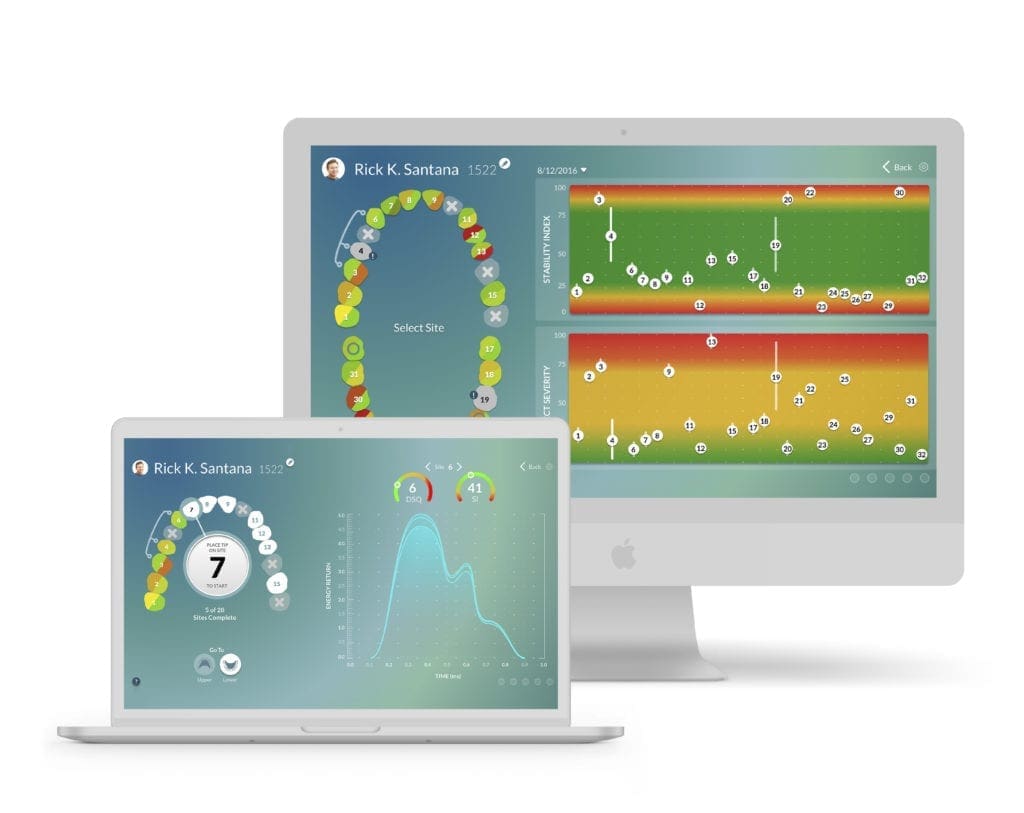
Design & Interface Development
Using Psycho-Aesthetics Methodology we mapped competitive offerings against user needs and desires. Our early design sketches reflected the opportunity zone created on the P/A Map. We then explored CMF and prototypes used for human-factors testing.
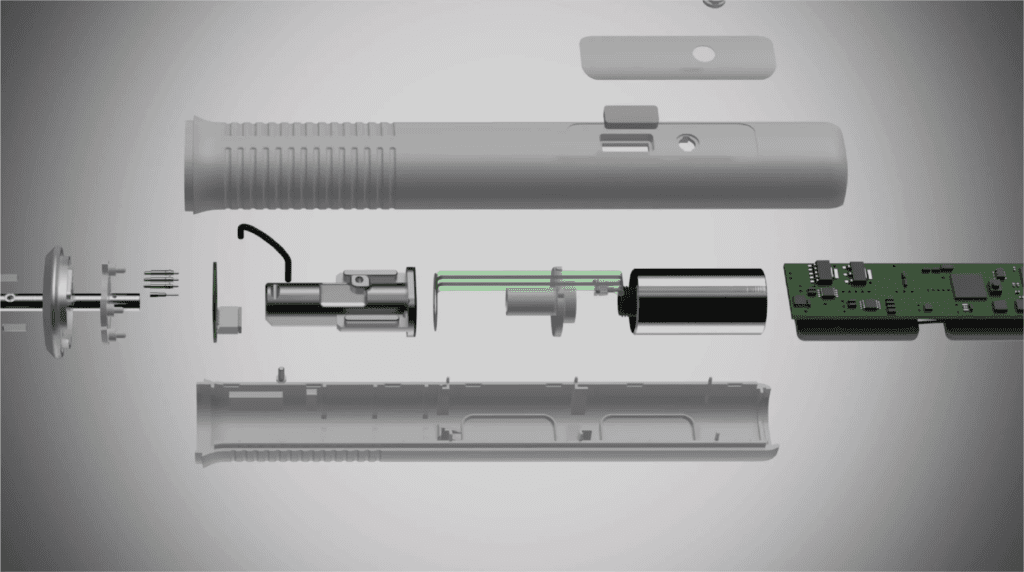

P/A Mapping & Exploring CMF
We used P/A mapping to understand how competitive offerings were filling the existing needs of stakeholders and personas and where our designs would land in the opportunity zone. The design had to be simple enough to be incorporated into existing workflows and intuitive enough to be adopted quickly.
The colors, materials, and feel had to be universal and timeless. We looked at shapes and options for buttons and indicators. We focused heavily on grip patterns and plastic materials.
Creating Initial Design Concepts & Developing Ergonomic Prototypes
Our initial design concepts focused on simplicity and usability. Early sketches focused on a small footprint and an ergonomic handpiece.
Initial form factors and ergonomic prototypes focused on reducing user error and enhancing accuracy. The device needed to be held and used properly in order to establish accurate readings. In addition, the device needed to perform consistently in a variety of mouths and when used by different caregivers.
Key Results
Our design and interface development resulted in early designs for a handpiece and supporting base with durable and ergonomic CMF, supported by an intuitive UI.
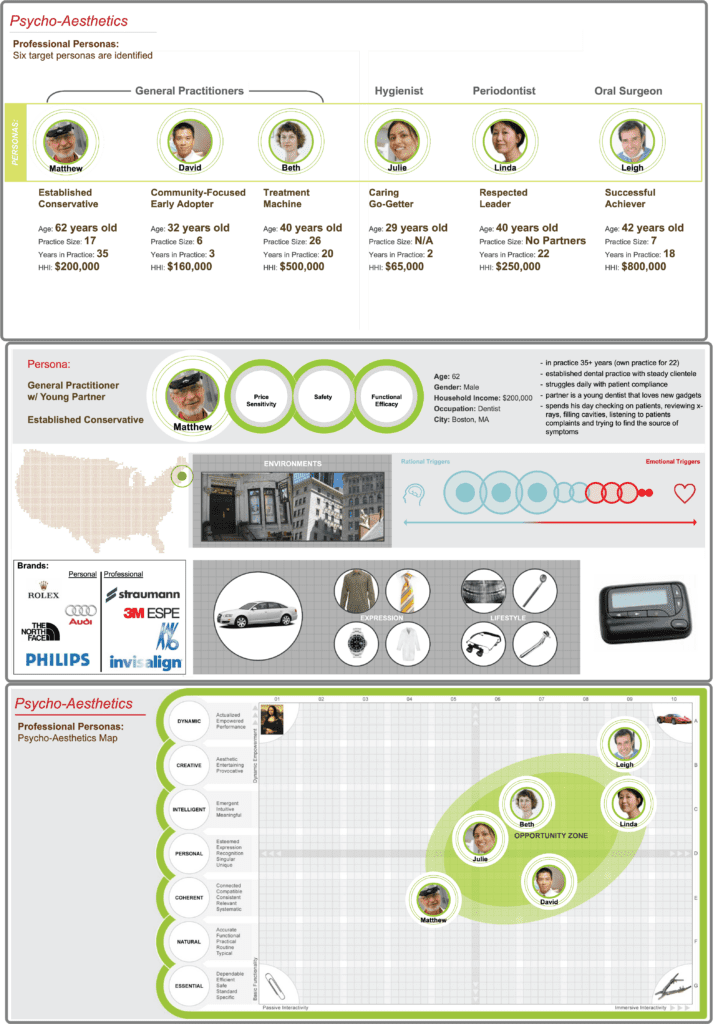
Design Finalization
Our final design integrated our P/A insights, human-factors considerations, design concepts and early CMF insights. We pursued a final design direction for a handpiece, base and UI using our collaborative relationship with the client. Our digital design translated vibrations into intuitive understanding of dental health.
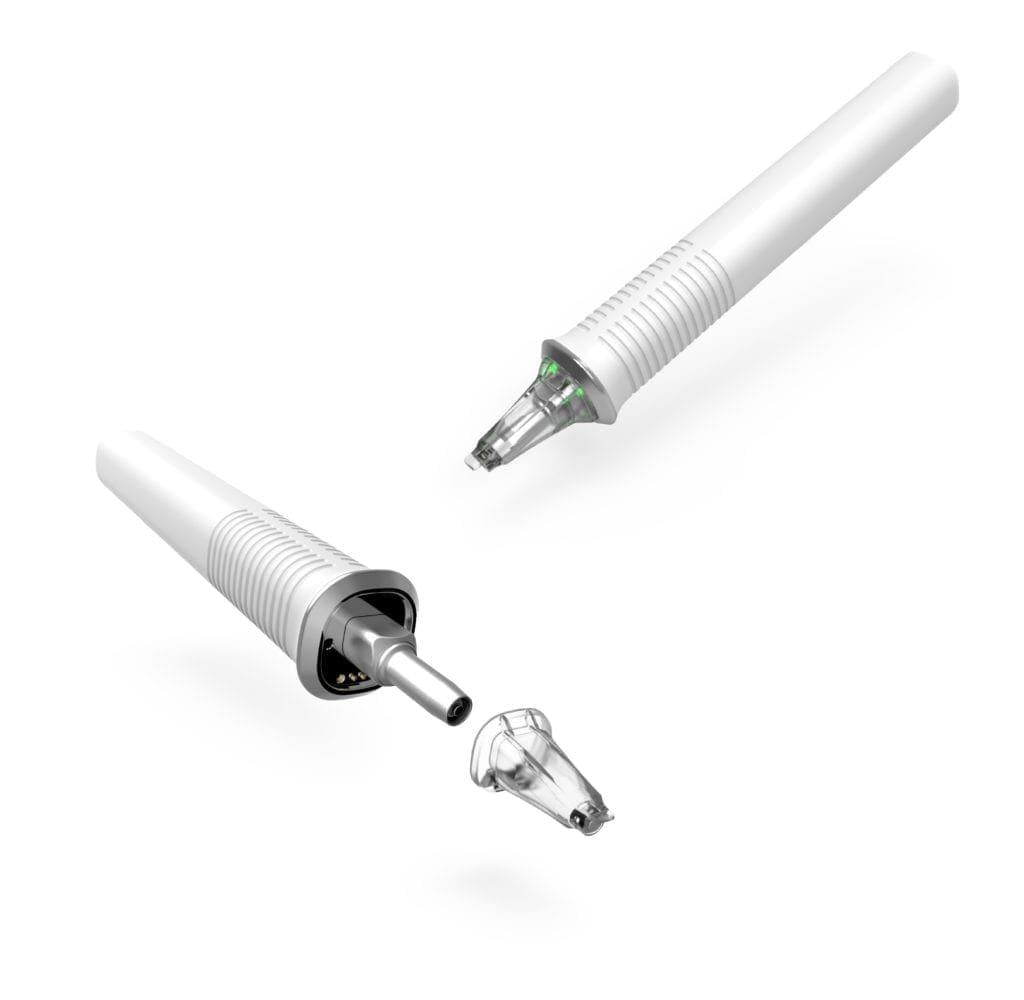

Prepare Concept Designs and Create Appearance Models
Our concept designs included a user interface for the software. As a key part of the UX, we thought through how the device is setup, how device data is visualized, and how the caregiver records data for each tooth.
We used RKS-machined appearance models in dental offices with target customers to test usability assumptions. Our CMF focus was on ergonomics and usability. We chose polished plastic to reduce the cleaning and wear issues with textured surfaces. Coloring and feel were designed to be familiar and functional.
Finalize Designs and Wireframes & Key Results
In our final design, we incorporated several key elements: ergonomics that allowed the caregiver to move and clean the device easily, a consumable head, a base station that assessed the operational health of the handpiece, and a time and universal look that was familiar and functional for each dental chair.
We honed and finalized a design for the hand piece, base, and software UI that was ready for engineering and met the strategic opportunity zone.
Production Engineering
This full development project required us to design and engineer the final product. Our engineers worked closely with our designers throughout the process to create an ergonomic and durable design around new sophisticated technology.
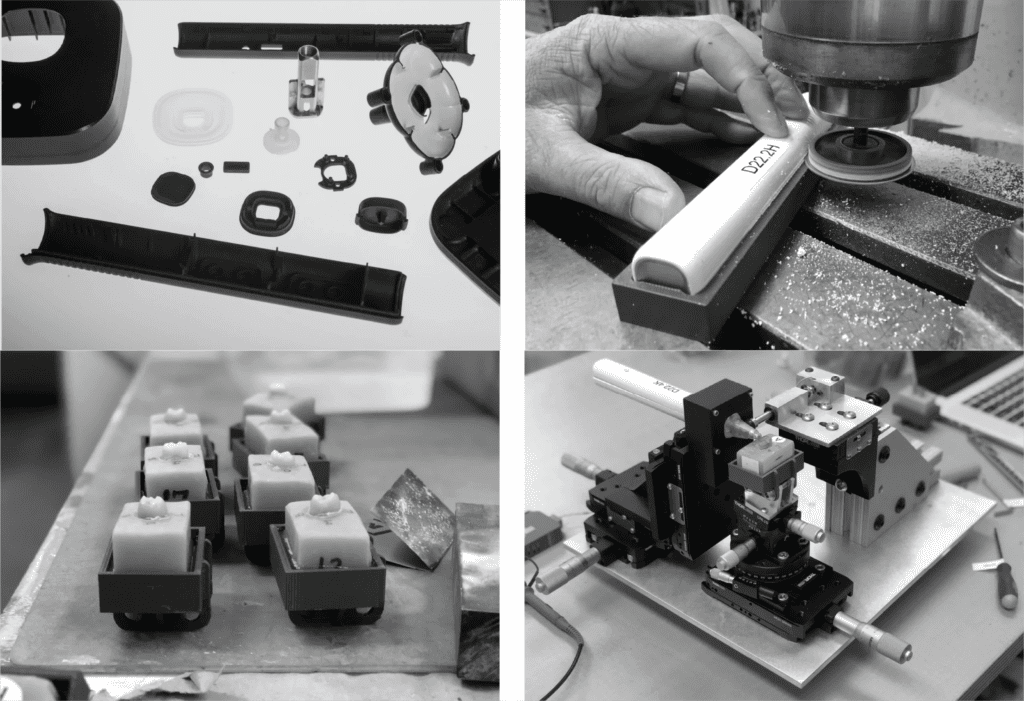
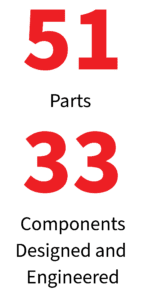
Engineering Analysis Breakdown & Internal and External Interviews
We analyzed and iterated on our engineering choices as we integrated them into a fully functional model. This model was then broken down to enable our client to bring the production-ready device to manufacturers for mass production.
We used a final set of interviews to understand how our final look-like works-like prototype functioned in real-world environments. These data points helped us refine and make small adjustments to the final industrial and engineering designs.
Insight Reports & Key Results
Our insights report was an important and substantial handover to our clients. Because we designed and developed the entire project, our clients needed a report to use as a foundation for taking the project forward.
Our product engineering designs were finalized, and we submitted a full industrial design and engineered product to the client for production and manufacturing.
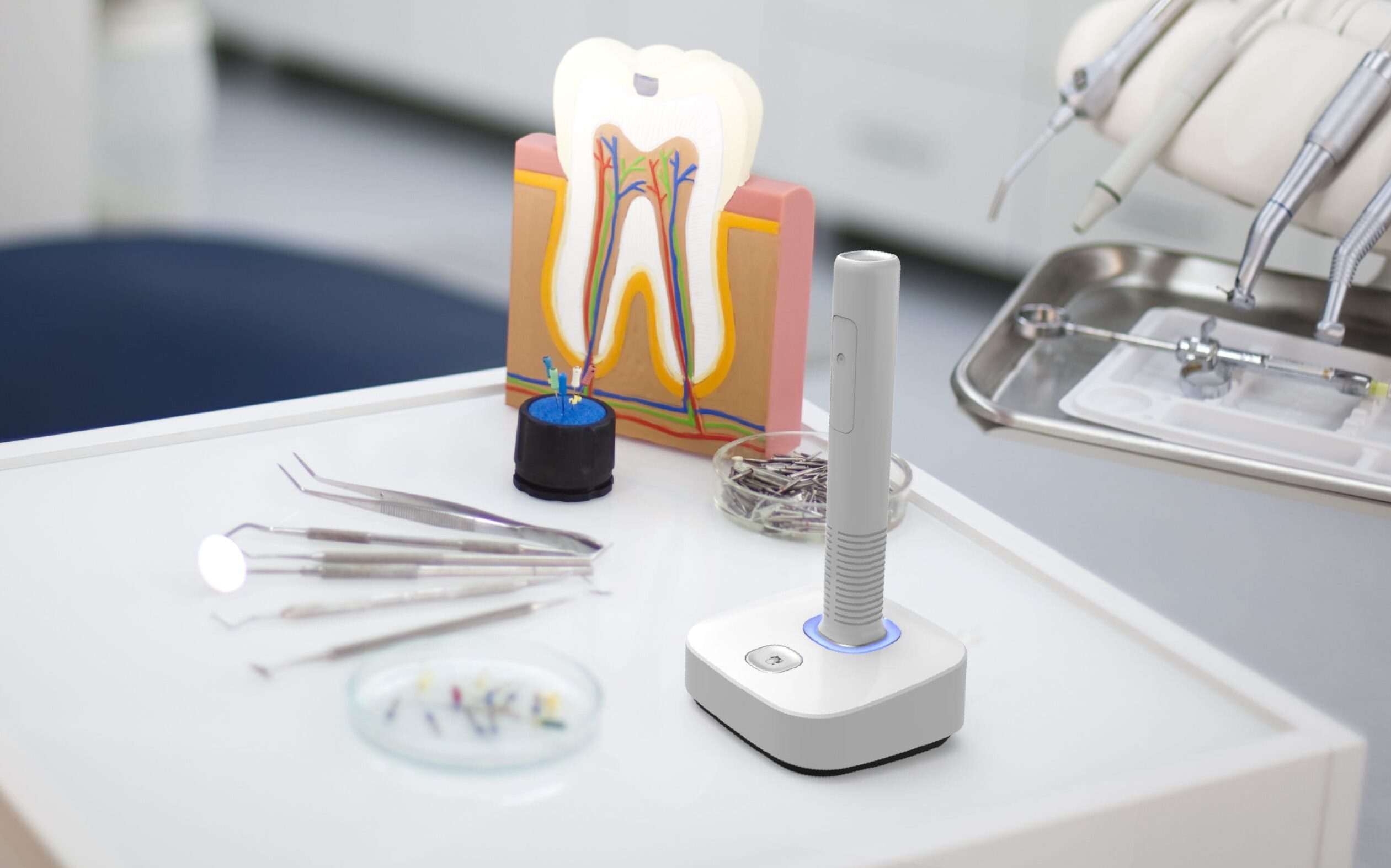
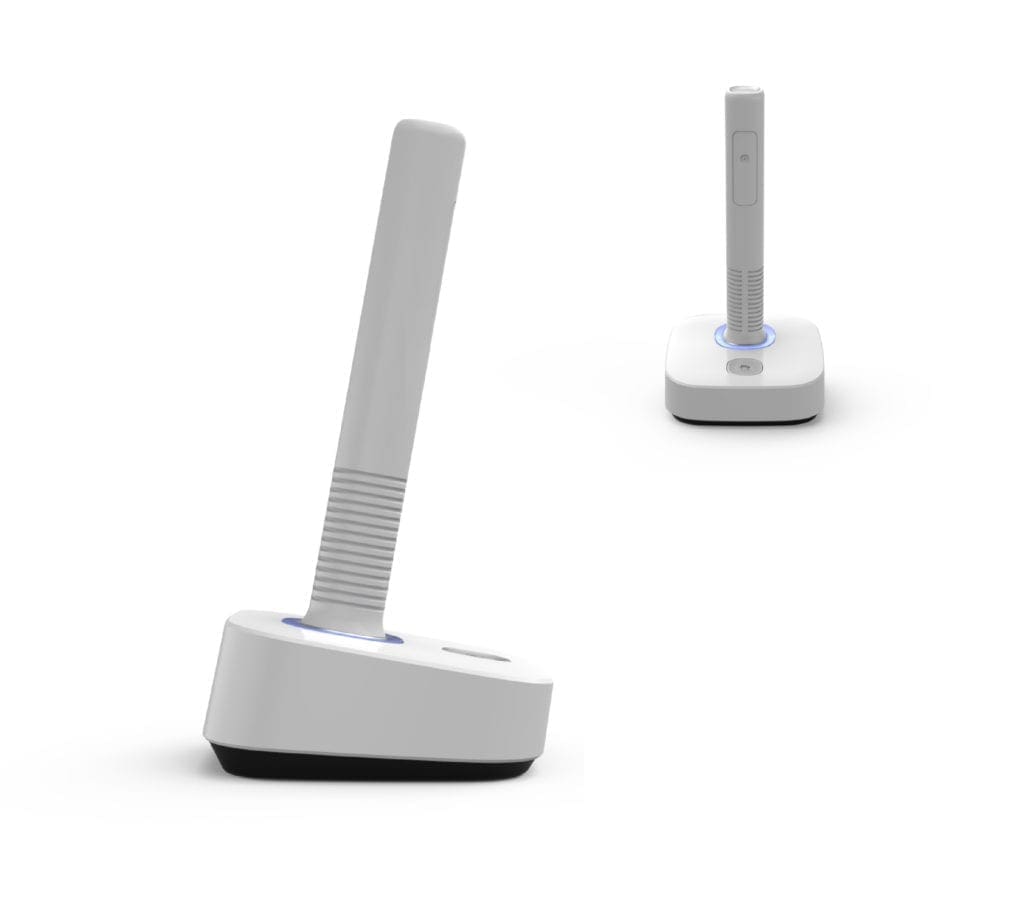
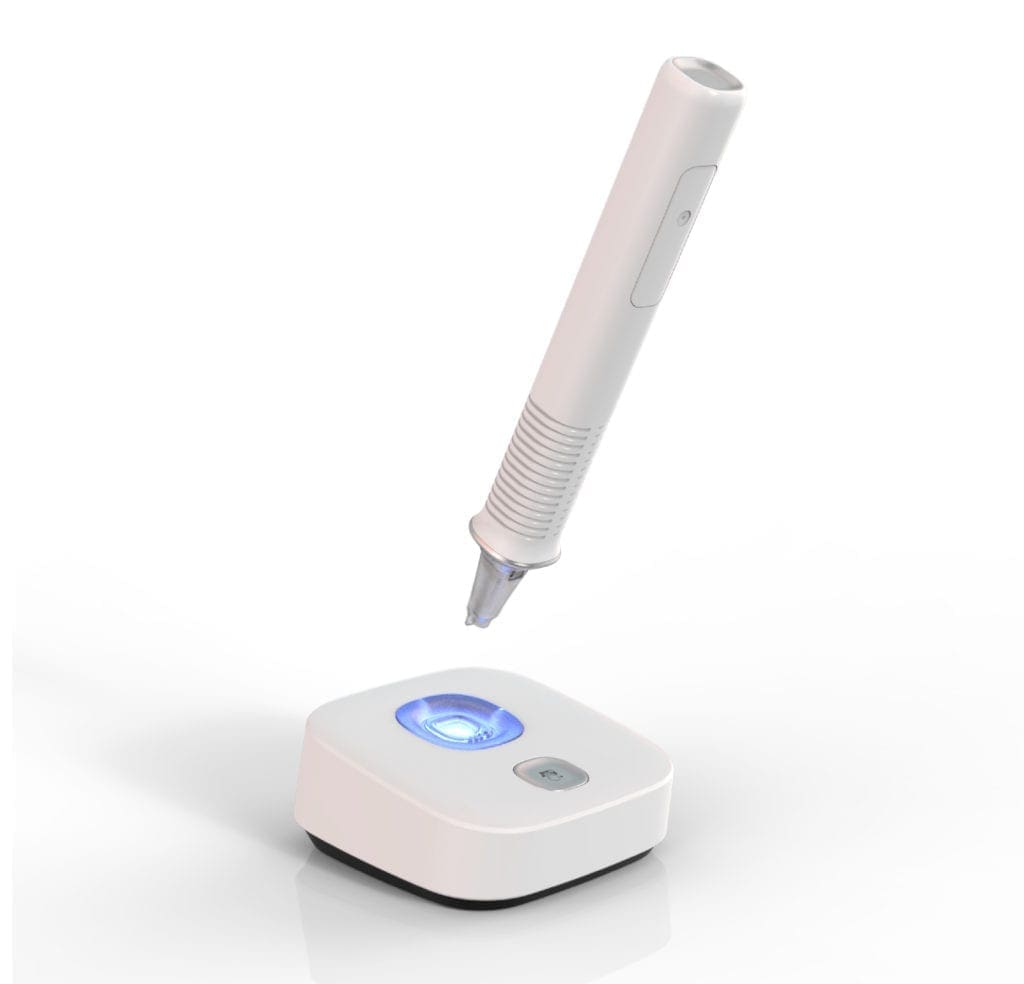
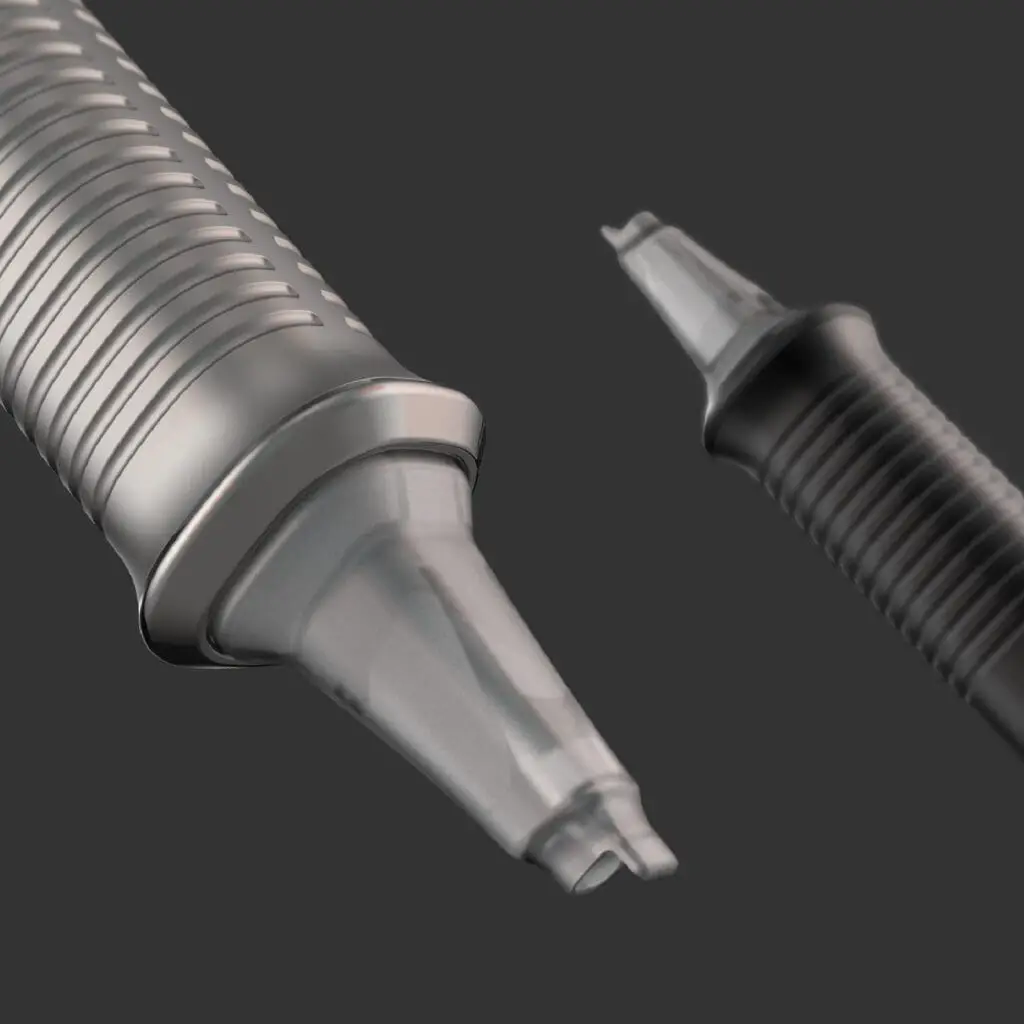
PERIOMETER

The Challenge

The Impact

The Outcome
Psycho Aesthetics™:
“It’s not how you feel about the design or experience, it’s how the design makes
you feel”
– Ravi Sawhney

Our Human-Centered Methodology
RKS Utilizes our Human-Centered Methodology, Psycho Aesthetics, to identify the key opportunities in the market and drive innovation across sectors and categories. Ravi’s book, Predictable Magic, which discusses how our P/A Methodology can be leveraged as a business tool, is published through Wharton School of Business. RKS also has a Harvard Exercise and Harvard Case Study, which can discuss the methodology and provide people with an understanding of how to apply Psycho-Aesthetics to their product development planning.
In addition to these publications, RKS teaches Psycho-Aesthetics to USC’s MBA program and runs workshops to teach our methodology at UCLA, CSUN, SCAD, CSULB, along with many companies looking to integrate design thinking into their organization. Psycho Aesthetics is also part of the core curriculum at SCAD, the largest design university in the US.
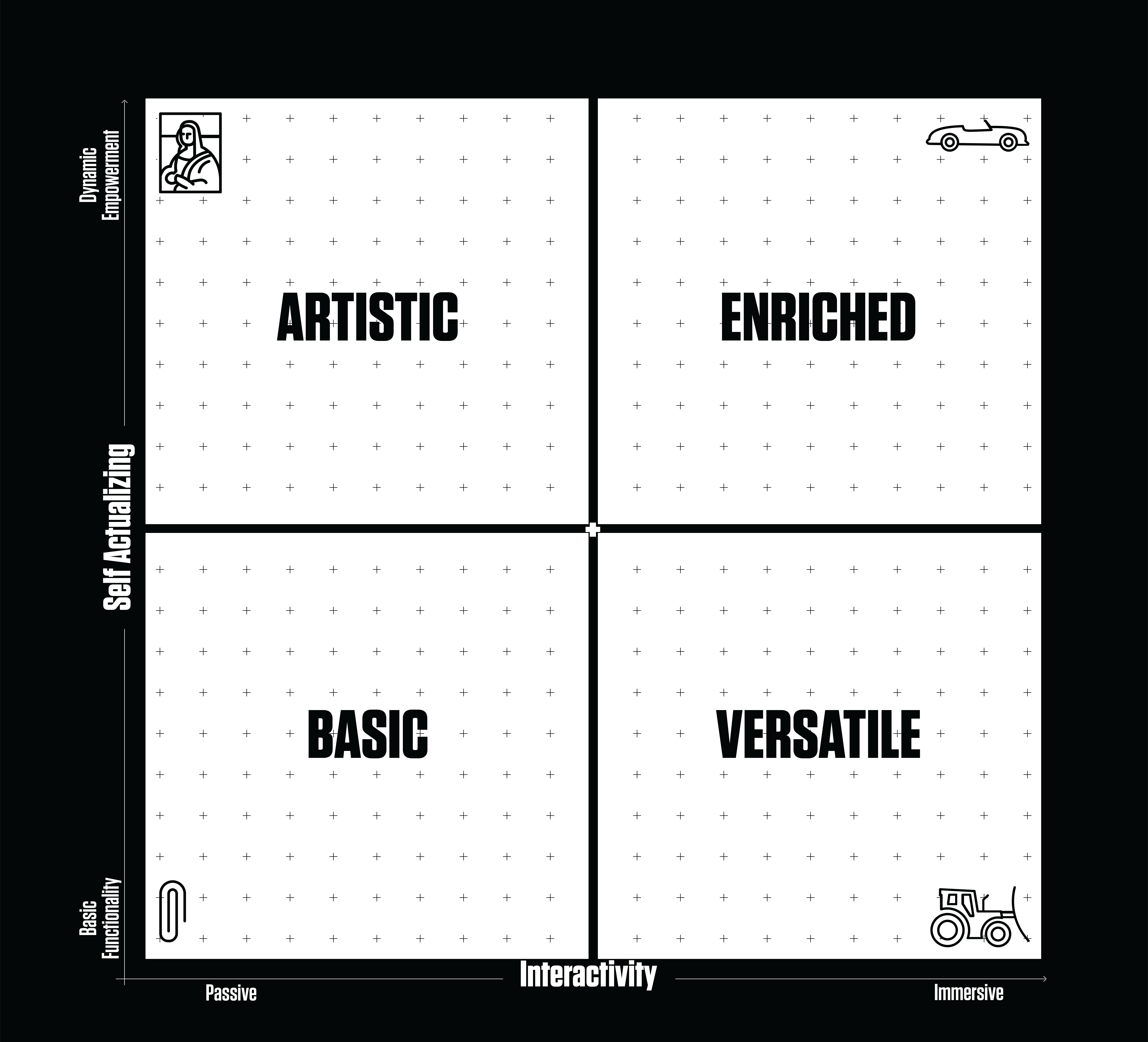
P/A Map™ by RKS Design


Research

Auxiliary Research & Engineering Analysis
Auxiliary research helped RKS understand the foundational technology: Percussion Diagnostics runs
a vibration on a tooth, and detects the wave pattern relative to the substrate. AI can translate the vibrations in a tooth into a visual representation or a pattern. A tooth that has a different composition or has a problem gives a deviated pattern from the rest of the teeth.
Because the percussive technology had not been proved out, only tested in very early forms, our engineering team would have to engineer the technology for human use. This preliminary engineering analysis provided the framework for the productized development of the final technology.

Internal and External Reviews & Key Results
We needed to understand the dental ecosystem, the stakeholders, and the existing technologies and 2 workflows used by caregivers. Our interviews helped us develop the required knowledge to dive deep into the project as a development firm, proving a new technology in a clinical setting.
Our initial assessment allowed us to understand the technology and user needs sufficiently to move onto a proof of concept to test the feasibly of the technology for the needed use cases.

Concepting
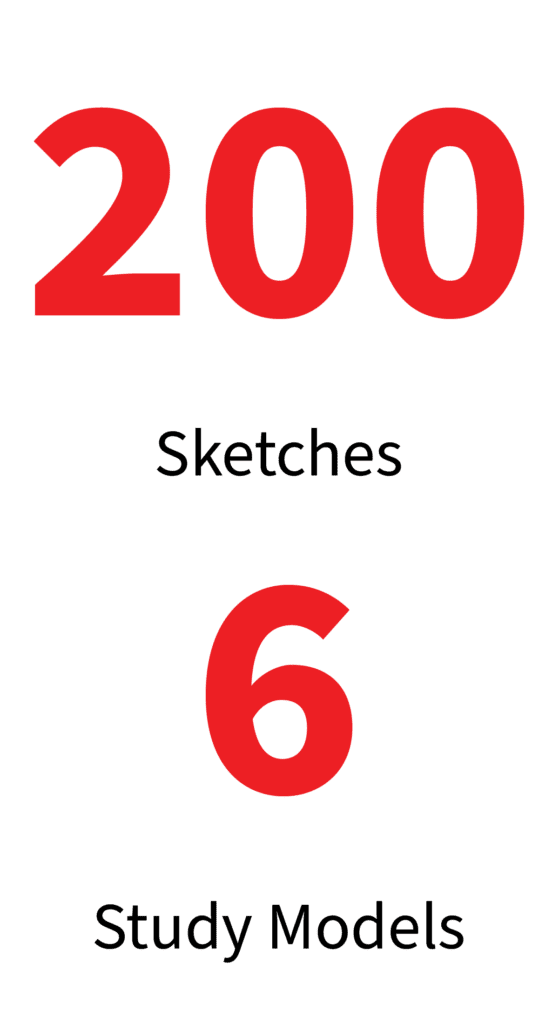
Evaluating COGS & 3D Configuration Development
Our client tasked us with developing a product that was cost-effective, and bio-compatible, and cost-effective to have at each dental station. We sent out RFPs to trusted partners, and evaluated new partners in order to come up with a COGS proposal.
Our team using basic tools such as white-boarding and sketching with the latest in 3D modeling to create proof of concepts. Our team had to understand how different materials, rods, and solenoids, and fore-sensors could be included in order to get accurate readings from a device.

Create Wireframes & Iterate Proof of Concept
We needed to create the UI that caregivers would use to understand and interact with the AI readouts. We began wire-framing concepts of the UI that could be used to display dental health information. As with any new technology, we needed to focus on simplifying it enough to be familiar yet highly functional.
In collaboration with the client, our team used an iterative process to create and evaluate proof of concept models. In quick succession, we honed and discarded potential directions in order to find an implementation of the technology that would be consistent and reliable enough for use.

Key Results
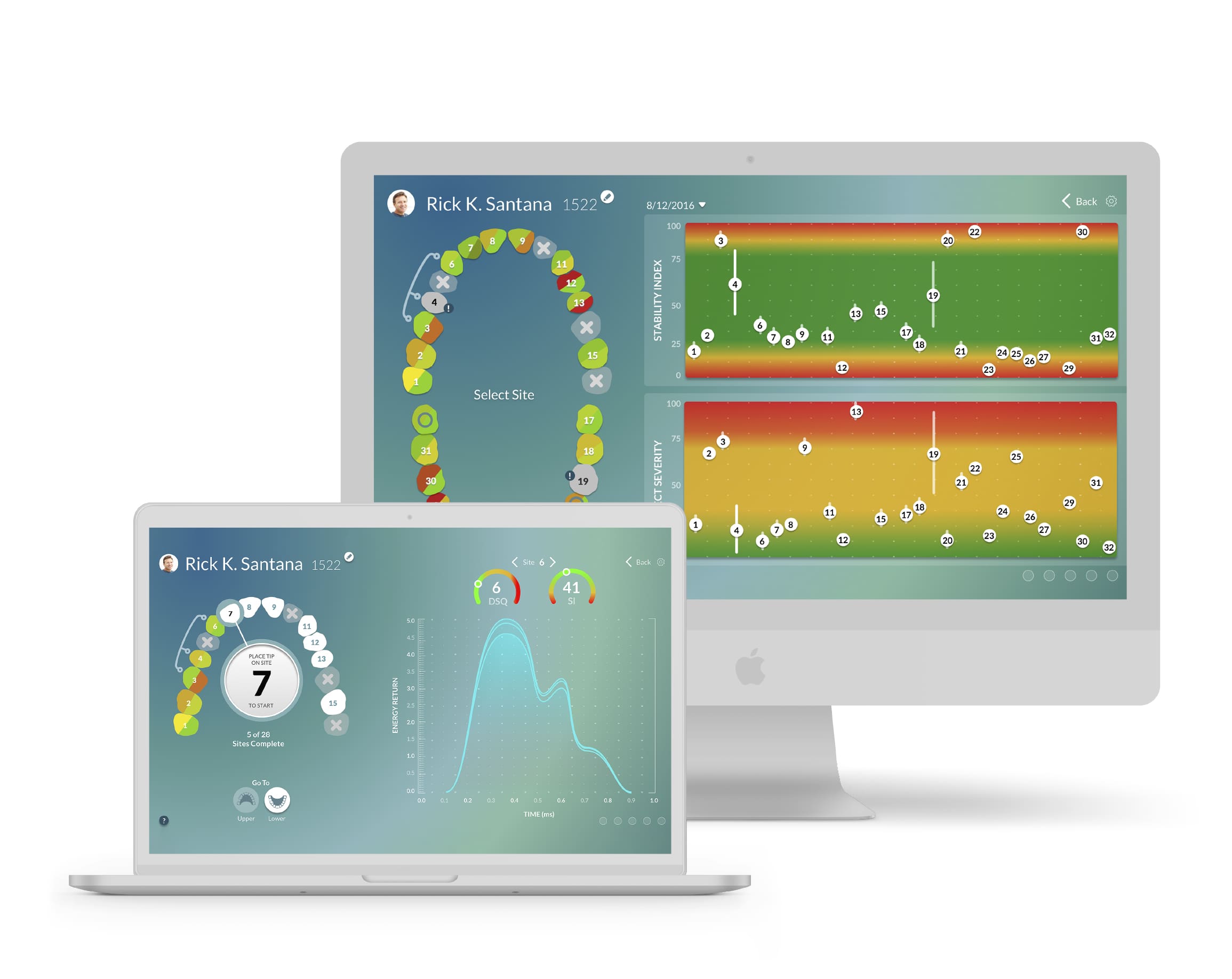

Design & Interface Development
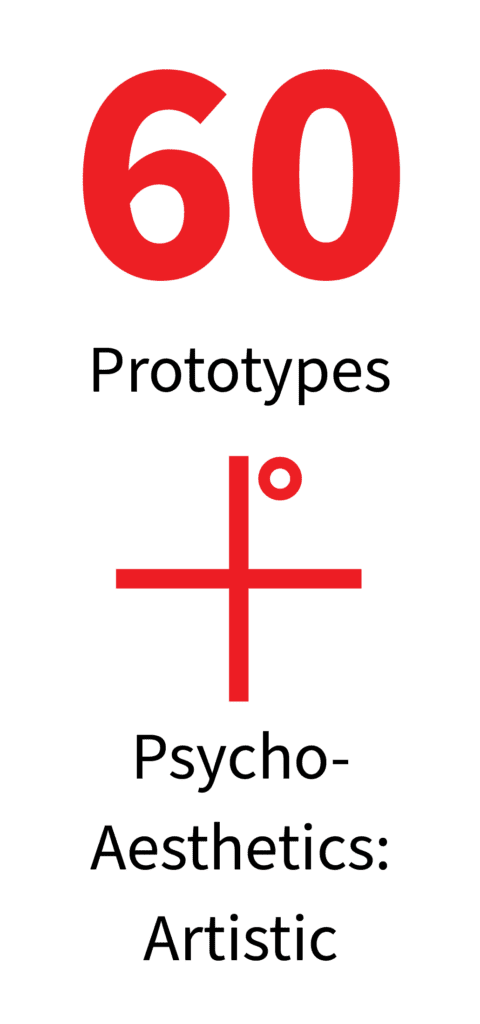
P/A Mapping & Exploring CMF
We used P/A mapping to understand how competitive offerings were filling the existing needs of stakeholders and personas and where our designs would land in the opportunity zone. The design had to be simple enough to be incorporated into existing workflows and intuitive enough to be adopted quickly.
The colors, materials, and feel had to be universal and timeless. We looked at shapes and options for buttons and indicators. We focused heavily on grip patterns and plastic materials.

Creating Initial Design Concepts & Developing Ergonomic Prototypes
Our initial design concepts focused on simplicity and usability. Early sketches focused on a small footprint and an ergonomic hand piece.
Initial form factors and ergonomic prototypes focused on reducing user error and enhancing accuracy. The device needed to be held and used properly in order to establish accurate readings. In addition, the device needed to perform consistently in a variety of mouths and when used by different caregivers.

Key Results


Design Finalization
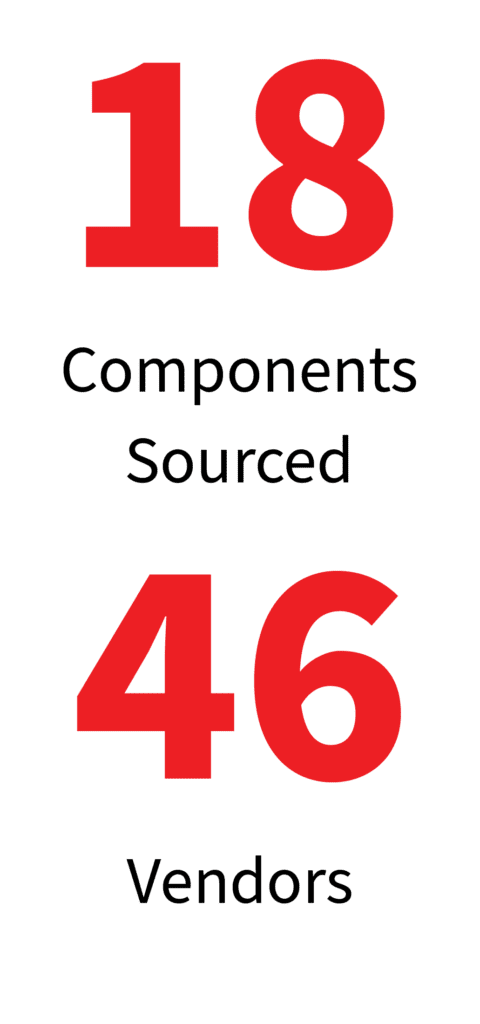
Prepare Concept Designs and Create Appearance Models
Our concept designs included a user interface for the software. As a key part of the UX, we thought through how the device is setup, how device data is visualized, and how the caregiver records data for each tooth.
We used RKS-machined appearance models in dental offices with target customers to test usability assumptions. Our CMF focus was on ergonomics and usability. We chose polished plastic to reduce the cleaning and wear issues with textured surfaces. Coloring and feel were designed to be familiar and functional.

Finalize Designs and Wireframes & Key Results
In our final design, we incorporated several key elements: ergonomics that allowed the caregiver to move and clean the device easily, a consumable head, a base station that assessed the operational health of the hand piece, and a time and universal look that was familiar and functional for each dental chair.
We honed and finalized a design for the hand piece, base, and software UI that was ready for engineering and met the strategic opportunity zone.

Production Engineering
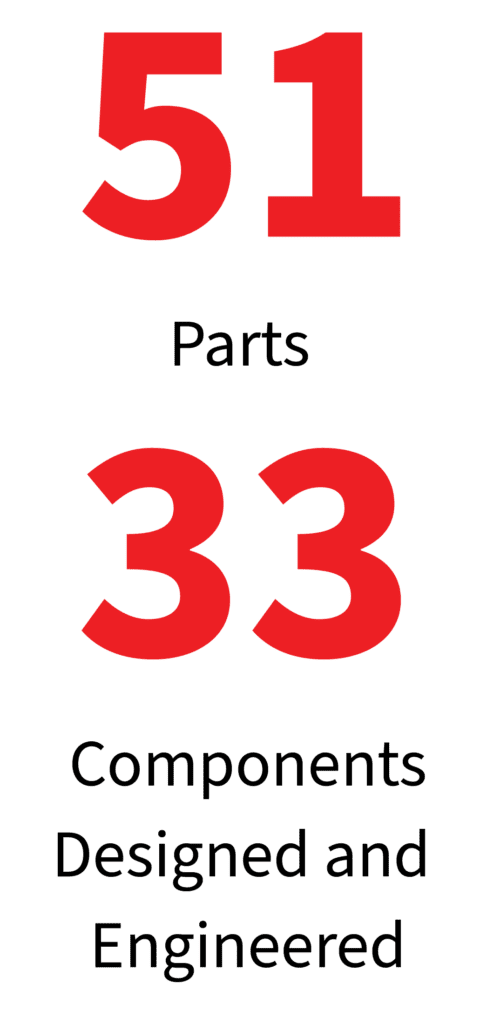
Engineering Analysis Breakdown & Internal and External Interviews
We analyzed and iterated on our engineering choices as we integrated them into a fully functional model. This model was then broken down to enable our client to bring the production-ready device to manufacturers for mass production.
We used a final set of interviews to understand how our final look-like works-like prototype functioned in real-world environments. These data points helped us refine and make small adjustments to the final industrial and engineering designs.

Insight Reports & Key Results
Our insights report was an important and substantial handover to our clients. Because we designed and developed the entire project, our clients needed a report to use as a foundation for taking the project forward.
Our product engineering designs were finalized, and we submitted a full industrial design and engineered product to the client for production and manufacturing.

